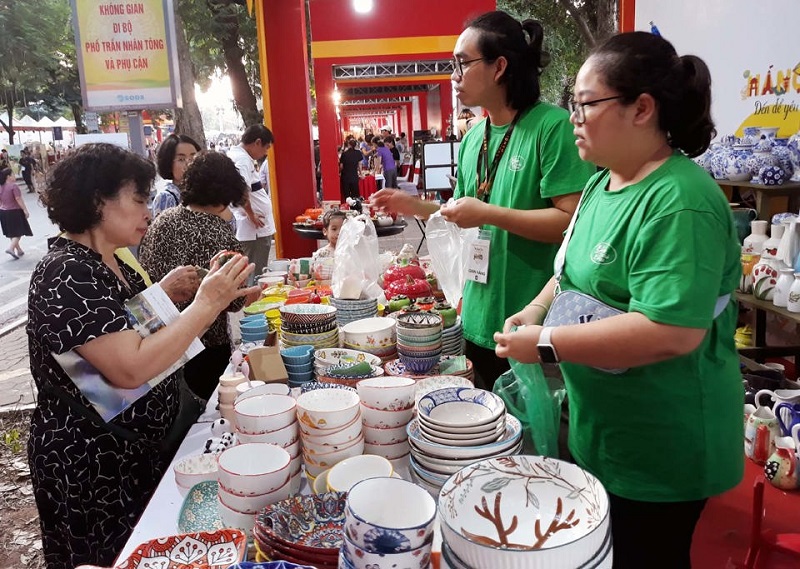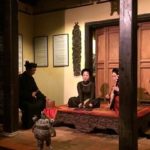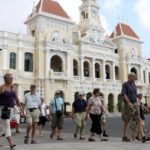In August 2023, Arnaud Zein El Din, a 44-year-old French architect, arrived in Hanoi on his own to explore the hidden charms of the Vietnamese capital. He quickly immersed himself in the city’s activities, participating in a trance ceremony, trying thuoc lao (rustic tobacco), and even taking a nude bath in the Red River.
During his trip, the highlight for Arnaud was when he purchased a votive horse from a local craftsman while traveling through Dong Anh District. For him, the votive horse reminded him of a piñata, a decorated figure filled with toys and candy that blindfolded children break in celebration.
Arnaud’s story became viral when airport security prohibited him from taking his votive horse on the plane. He had to leave his handmade item behind in Vietnam. However, a few weeks later, he received a new smaller votive horse filled with wishes and gratitude from the Vietnamese people.
This story exemplifies the attractiveness of local handicrafts to foreigners, particularly in Hanoi, a city known for its more than 1,300 craft villages with centuries of tradition. Despite this, Hanoi has struggled to captivate the interest of foreign visitors in its local handmade products.
In Hanoi’s Old Quarter, many foreign tourists browse through local shops without making any purchases. These items, despite being mass-produced, lack the cultural iconicity to represent the essence of the capital.
Charles Win, an American who has lived in Hanoi for years, believes that each of Hanoi’s handicrafts carries its own unique story. He mentions that the city has countless narratives and experiences revealing its history and traditions. According to him, storytelling has the power to touch every visitor’s heart and inspire them to buy more.
Win also suggests that craft villages should recreate the ambiance of the past where tourists can engage in the handicraft process themselves.
Craft villages have faced challenges in integrating traditional values into their production and effectively marketing their products to customers. Artists from Bat Trang Pottery Village, such as Tran Duc Tan, express that it is difficult to infuse Vietnamese traditions into their products and narrate the stories behind them. Additionally, these products are not always considered useful enough for travelers.
Nguyen Van Tinh from Phu Vinh Rattan Village notes that household workshops are solely focused on producing handicrafts and haven’t found a way to promote their brands and transform their villages into appealing tourism destinations.
To overcome these obstacles, several craft villages have started exploring new creative products, such as jewelry, which requires a smaller workshop and provides a more interactive experience for travelers.
Nguyen Duong Thao, head of the management committee of Duong Lam Ancient Village, mentions that visitors often show little interest in locally made products. To spark their curiosity, artisans have allowed visitors into their workshops, letting them create their own souvenirs to take home. This model has received positive responses from guests.
Artisan Nguyen Duy Linh specializes in creating light boxes using the Japanese paper art kirigami. Linh believes that with over a thousand craft villages in the city, it is challenging to determine which one should represent Hanoi and be considered worth buying for visitors. Nevertheless, he emphasizes that adding a story to each product is the best way to market local handicrafts.
Dang Huong Giang, director of the Hanoi Tourism Department, recommends that travel agencies, craft villages, and production facilities strengthen their collaboration. The department aims to continue supporting local handicraft villages in integrating stories into their products, ensuring their highest quality, and promoting mass production, eco-friendliness, and usefulness.
The Hanoi Gifts Festival 2023, which took place from November 3 to November 5, attracted more than 20,000 visitors who came to purchase locally-made items. The festival aimed to showcase local souvenirs, including new products that celebrated the values of Hanoi.
The event featured numerous local artisans, producers, craft villages, and travel companies in Hanoi, providing visitors with an opportunity to experience their products and services. It also included exhibitions, street performances, cultural and art shows, workshops on traditional craft village development, and folk shows.
According to Tran Trung Hieu, Deputy Director of the Hanoi Tourism Department, the festival served as a platform for craft villages and artisans to meet, honor, and promote local craft products. It facilitated connections among those involved in the craft-making industry, helping them improve the quality of products and services, develop new designs, and enhance creativity and competitiveness.
Ancient house in Ma May
NDO – Ma May, a rare quarter that still retains several old houses, has created one of the characteristics of Hanoi. Hanoi’s streets are becoming increasingly crowded and traditional features can sometimes be hidden behind modern life. But if one takes the time to relax and look around, the ancient features begin to reveal themselves.
Book festival “Hanoi – City for Peace” opens
NDO – The Hanoi book festival with the theme “Hanoi – City for Peace” opened at the Imperial Citadel of Thang Long in Hanoi on October 2, as part of activities to celebrate the 65th anniversary of the capital’s Liberation Day (October 10, 1954-2019).









